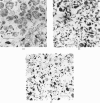Abstract
1. A crude mitochondrial–lysosomal preparation from brain tissue was layered on a sucrose gradient containing 20mm-succinate, 10mm-Tris and 1mm-disodium EDTA at pH7.4. The lysosomes were separated from the mitochondria and synaptosomes by means of a twosteps centrifugation procedure. In a first low-speed step (40min at 5300g at 15°C) the sedimentation rate of mitochondria and mitochondria-containing synaptosomes was enlarged due to passage of these subcellular structures through the sucrose gradient with the above-mentioned chemicals (called `chemical field'). That part of the gradient which contained the mitochondria and synaptosomes was removed and substituted by a gradient suitable for isopycnic isolation of lysosomes in a second centrifugation step. The achieved purification for bovine brain lysosomes was 5–8-fold, for rat brain lysosomes 7–10-fold, over the homogenate. 2. The enlargement of the sedimentation rate of mitochondria and synaptosomes was brought about by the presence of succinate, but also by one of the following salts in the chemical field: malonate, fumarate, pyruvate, phosphate and chloride. 3. Comparison of the chemical-field method with other methods for the isolation of lysosomes showed that (a) with the chemical-field method a 2–3-times higher purification of the rat and bovine brain lysosomal fraction can be achieved than with the procedure described by Koenig, Gaines, McDonald, Gray & Scott [(1964) J. Neurochem. 11, 729–743], and that (b) similar purification results for rat liver lysosomes were obtained when the chemical-field method and the procedure described by van Dijk, Roholl, Reijngoud & Tager [(1976) FEBS Lett. 62, 177–181] were compared.
Full text
PDF
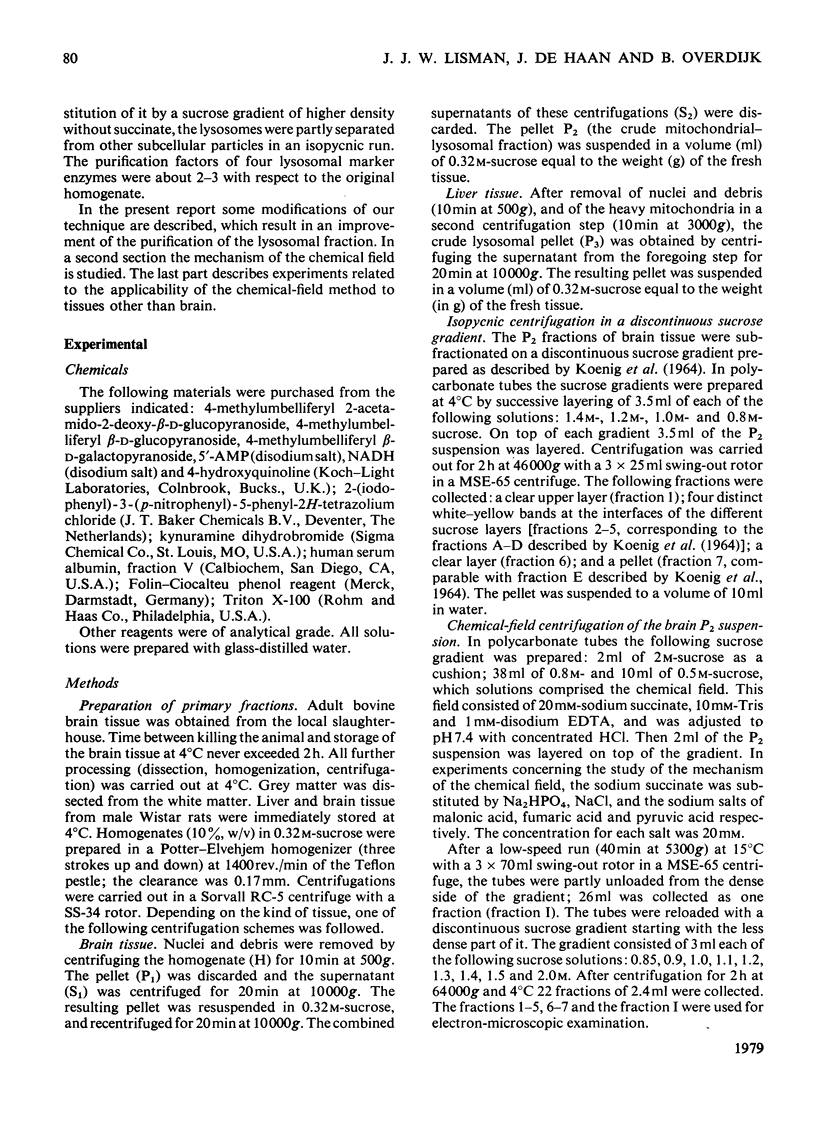

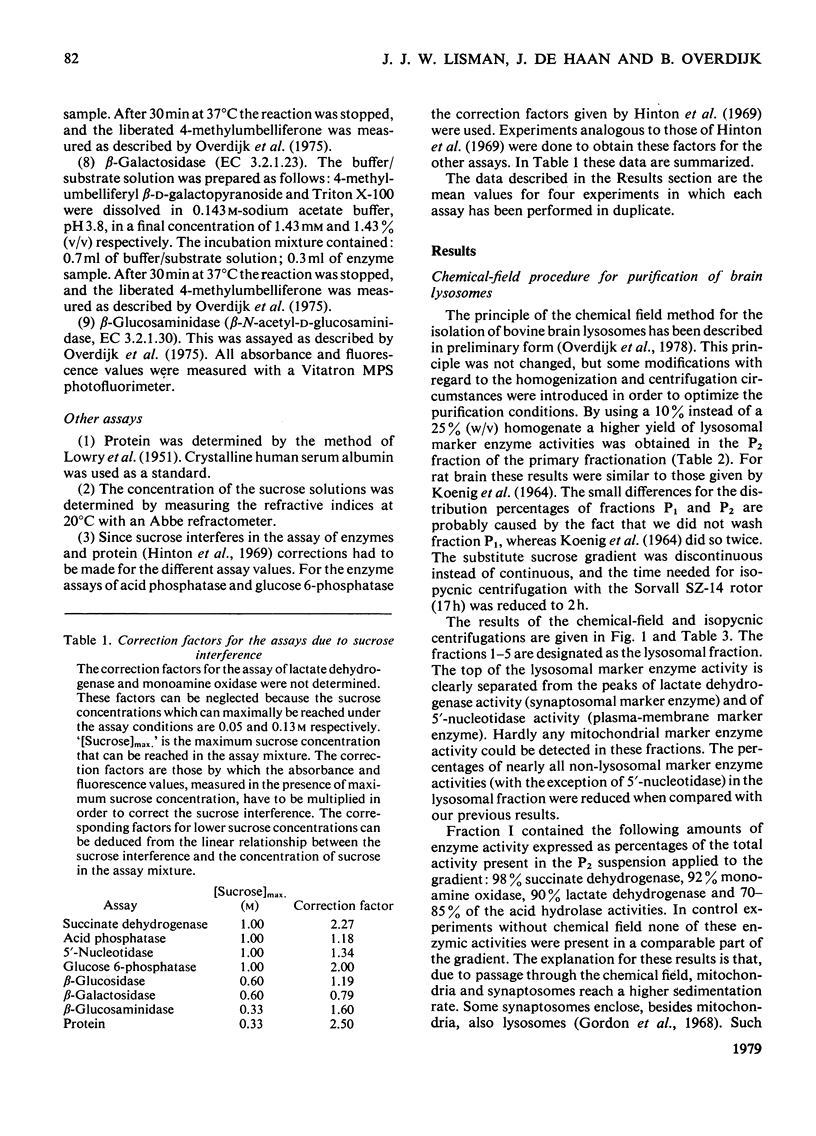


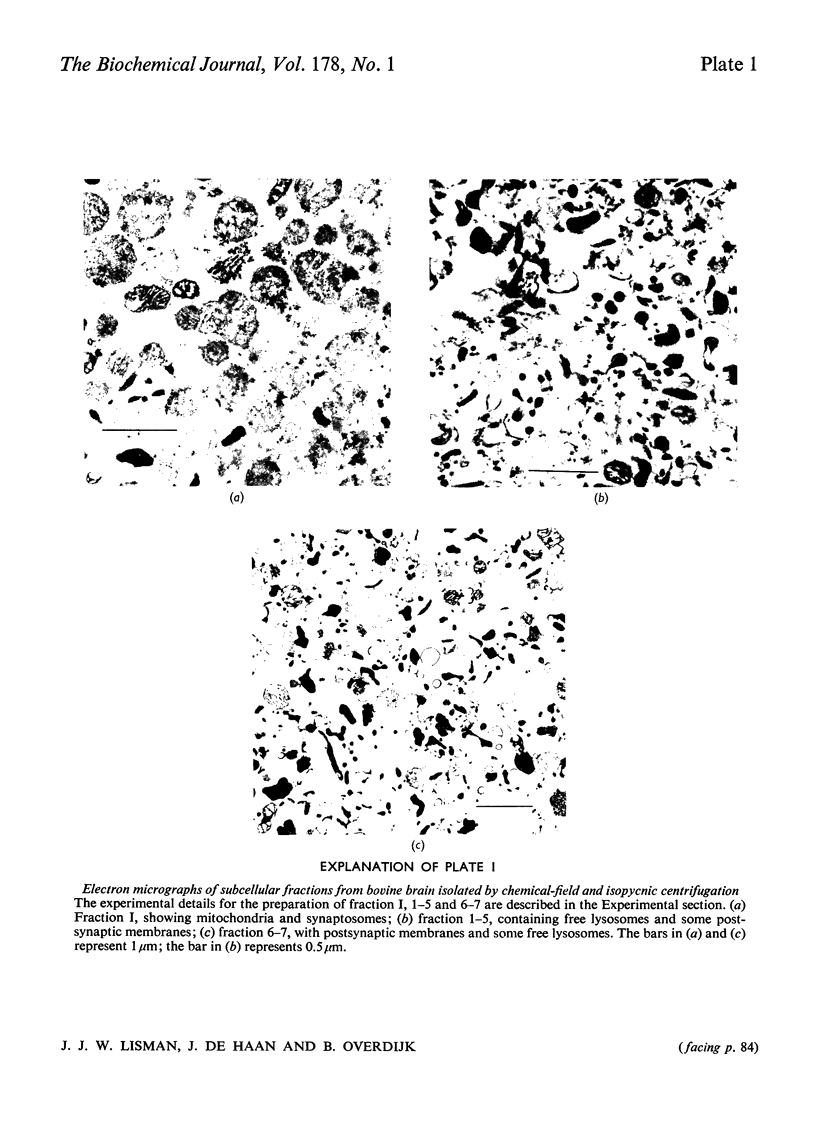

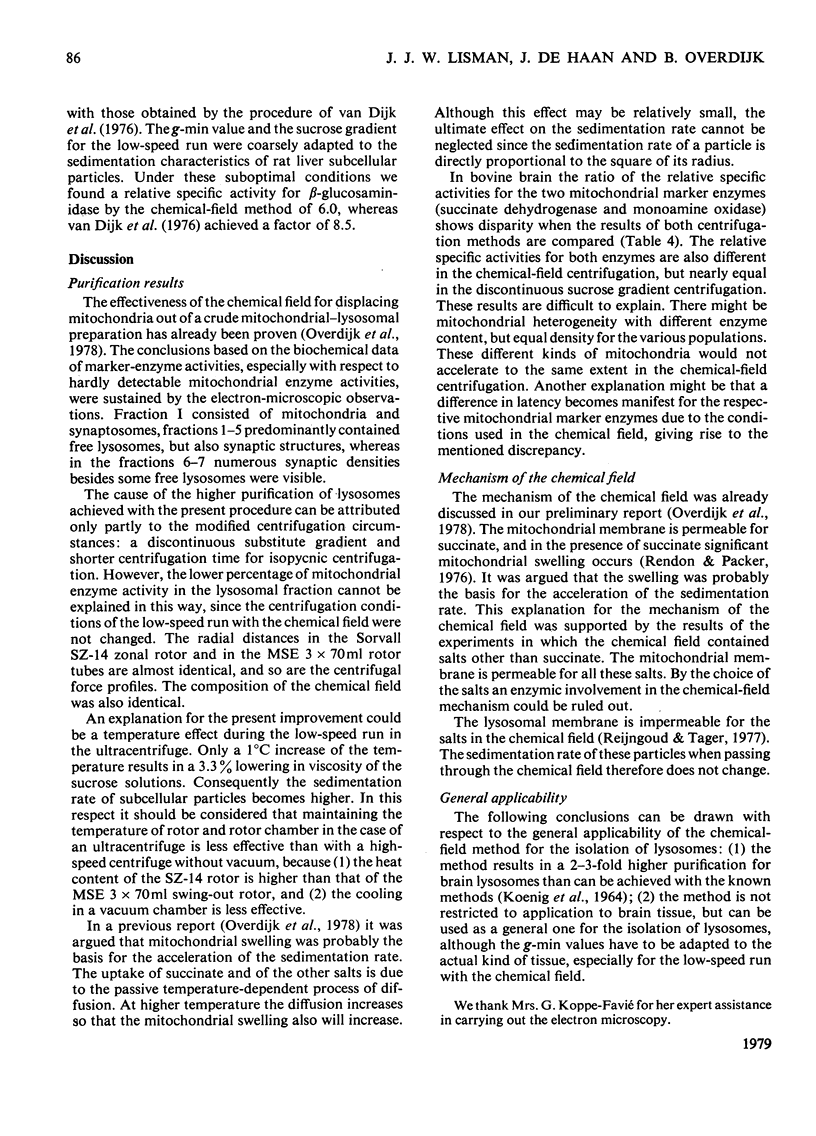

Images in this article
Selected References
These references are in PubMed. This may not be the complete list of references from this article.
- Arborgh B. A., Glaumann H., Ericsson J. L. Studies on iron loading of rat liver lysosomes. Effects on the liver and distribution and fate of iron. Lab Invest. 1974 May;30(5):664–673. [PubMed] [Google Scholar]
- Arborgh B., Ericsson J. L., Glaumann H. Method for the isolation of iron-loaded lysosomes from rat liver. FEBS Lett. 1973 May 15;32(1):190–194. doi: 10.1016/0014-5793(73)80769-0. [DOI] [PubMed] [Google Scholar]
- Cohen H. A., McGovern S. A. Identity of "dumbbell" profiles in synaptosomal fractions from rat brain. J Neurobiol. 1973;4(6):583–587. doi: 10.1002/neu.480040610. [DOI] [PubMed] [Google Scholar]
- Davis G. A., Bloom F. E. Subcellular particles separated through a histochemical reaction. Anal Biochem. 1973 Feb;51(2):429–435. doi: 10.1016/0003-2697(73)90496-x. [DOI] [PubMed] [Google Scholar]
- GOODLAD G. A., MILLS G. T. The acid phosphatases of rat liver. Biochem J. 1957 Jun;66(2):346–354. doi: 10.1042/bj0660346. [DOI] [PMC free article] [PubMed] [Google Scholar]
- Garey R., Harper J., Best J. B., Goodman A. B. Preparative resolution and identification of synaptic components of rat neocortex. J Neurobiol. 1972;3(2):163–195. doi: 10.1002/neu.480030205. [DOI] [PubMed] [Google Scholar]
- Gordon M. K., Bench K. G., Deanin G. G., Gordon M. W. Histochemical and biochemical study of synaptic lysosomes. Nature. 1968 Feb 10;217(5128):523–527. doi: 10.1038/217523a0. [DOI] [PubMed] [Google Scholar]
- Hinton R. H., Burge M. L., Hartman G. C. Sucrose interference in the assay of enzymes and protein. Anal Biochem. 1969 May;29(2):248–256. doi: 10.1016/0003-2697(69)90308-x. [DOI] [PubMed] [Google Scholar]
- KOENIG H., GAINES D., MCDONALD T., GRAY R., SCOTT J. STUDIES OF BRAIN LYSOSOMES. I. SUBCELLULAR DISTRIBUTION OF FIVE ACID HYDROLASES, SUCCINATE DEHYDROGENASE AND GANGLIOSIDES IN RAT BRAIN. J Neurochem. 1964 Oct;11:729–743. doi: 10.1111/j.1471-4159.1964.tb06118.x. [DOI] [PubMed] [Google Scholar]
- LOWRY O. H., ROSEBROUGH N. J., FARR A. L., RANDALL R. J. Protein measurement with the Folin phenol reagent. J Biol Chem. 1951 Nov;193(1):265–275. [PubMed] [Google Scholar]
- McQueen M. J., King J. Evaluation of the Vitatron automatic kinetic enzyme system. Clin Chim Acta. 1975 Oct 15;64(2):155–164. doi: 10.1016/0009-8981(75)90197-7. [DOI] [PubMed] [Google Scholar]
- Neil M. W., Horner M. W. Studies on acid hydrolases in adult and foetal tissues. Acid rho-nitrophenyl phosphate phosphohydrolases of adult guinea-pig liver. Biochem J. 1964 Jul;92(1):217–224. doi: 10.1042/bj0920217. [DOI] [PMC free article] [PubMed] [Google Scholar]
- Overdijk B., van der Kroef W. M., Veltkamp W. A., Hooghwinkel G. J. The separation of bovine brain beta-N-acetyl-D-hexosaminidases. Abnormal gel-filtration behaviour of beta-N-acetyl-D-glucosaminidase C. Biochem J. 1975 Nov;151(2):257–261. doi: 10.1042/bj1510257. [DOI] [PMC free article] [PubMed] [Google Scholar]
- PENNINGTON R. J. Biochemistry of dystrophic muscle. Mitochondrial succinate-tetrazolium reductase and adenosine triphosphatase. Biochem J. 1961 Sep;80:649–654. doi: 10.1042/bj0800649. [DOI] [PMC free article] [PubMed] [Google Scholar]
- REYNOLDS E. S. The use of lead citrate at high pH as an electron-opaque stain in electron microscopy. J Cell Biol. 1963 Apr;17:208–212. doi: 10.1083/jcb.17.1.208. [DOI] [PMC free article] [PubMed] [Google Scholar]
- Reijngoud D. J., Tager J. M. The permeability properties of the lysosomal membrane. Biochim Biophys Acta. 1977 Nov 14;472(3-4):419–449. doi: 10.1016/0304-4157(77)90005-3. [DOI] [PubMed] [Google Scholar]
- Trouet A. Immunisation de lapins par des lysosomes hépatiques de rats traités au Triton WR 1339. Arch Int Physiol Biochim. 1964 Sep;72(4):698–700. [PubMed] [Google Scholar]
- Van Dijk W. F., Roholl P. J., Reijngoud D. J., Tager J. M. A simple procedure for the isolation of lysosomes from normal rat liver. FEBS Lett. 1976 Feb 15;62(2):177–181. doi: 10.1016/0014-5793(76)80047-6. [DOI] [PubMed] [Google Scholar]



